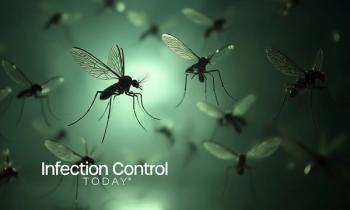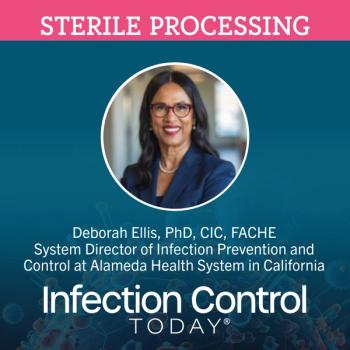
Automated Handwashing System Boosts Hand Hygiene Compliance
Q:
Why is proper hand hygiene critical?
A:
Practicing proper hand hygiene is essential to protecting public health. Healthcare-acquired infections (HAIs) represent nearly 2 million infections and cause 100,000 deaths each year in the United States. One-third of these infections are preventable. According to the Centers for Disease Control and Prevention (CDC), handwashing is the single most critical measure to reducing the spread of infections.
Q:
How can proper hand hygiene reduce cross-contamination in the healthcare environment?
A:
Infections can spread by healthcare workers moving from patient to patient without performing proper hand hygiene, through sores or open wounds on the hands, and by touching contaminated objects. Many HAIs can be prevented through simple and cost-effective handwashing and sanitizing measures.
Q:
How does an automated handwashing system ensure proper hand hygiene as well as sufficient duration of washing?
A:
The CleanTech touchless system performs a fully-automated 12-second wash, sanitize and rinse cycle. Using Resurgent’s proprietary chlorhexidine gluconate (CHG) sanitizing solution, the single cycle has been shown to remove more than 99.98 percent of pathogens and can continue to kill germs for up to six hours. The system further boosts compliance by ensuring a pleasant, uniform handwash from fingertip to wrist using 40 high-pressure water jets that perform a consistent wash-and-sanitize cycle every time the machines are used.
Q:
What are the benefits of Resurgent’s CHG-based sanitizing solution?
A:
The benefits of CHG are clear. CHG provides a residual killing effect of up to six hours. Continued use of our CHG-based solution creates a non-receptive environment for germs. When CHG is used over time, the residual effect also increases. CHG is also gentle on the hands. There are no added odors or dyes or damaging chemicals to disrupt the skin’s natural balance. Plus, the added emollients condition the skin and help to improve skin health over time.
Q:
Why are automated handwashing systems superior to the traditional sink method of hand hygiene?
A:
CleanTech systems use a proprietary rotating handwash cylinder technology that has been proven through 20 years of successful experience in food processing, food handling and clean room manufacturing. According to industry studies, the technology virtually eliminates transient pathogens from the hands and increases the frequency of employee handwashing by up to 400 percent.
Although there are a number of ways to kill germs, most aren’t even close to 100 percent effective. This is mostly because understanding the proper way to wash hands or use alcohol-based sanitizers takes work.
Getting everyone in the workplace to correctly wash their hands several times a day can be a challenge. CleanTech systems automate the process to make it easier and more effective.
Q:
How can an automated system help with verification relating to hand hygiene compliance?
A:
Handwashing compliance among healthcare workers is, on average, well below 50 percent. The verification process involved with traditional handwashing compliance monitoring and auditing can be time-consuming, and quite often inaccurate.
The CleanTech IC handwashing system can be equipped with an automated RFID compliance monitoring capability. Radio-frequency identification (RFID) employee badge reading technology, combined with CleanTracker data-reporting software, provides hospitals with automated monitoring and reporting of handwashing events.
The automated process tracks every handwashing event and provides a fact-based tool to monitor hygiene trends and drive improvements in hand hygiene practices.
Each staff member or visitor wears an RFID tag with a specific identification number on his/her badge. When a handwashing event occurs, the built in RFID reader automatically identifies the employee or visitor (based on name or a generic ID number) through ultra-high frequency badge-reading technology.
Once the user is identified, the technology records the time, date, location and completion of the wash cycle and adds the information to the CleanTracker database.
Data is sent to either a local or Web-based server. Detailed compliance reports can be collected in real-time, sorting by any of the collected identifying information.
Q:
How can the unit itself be kept clean?
A:
Because antimicrobial agents are continually running through the cylinders and jet nozzles, the CleanTech keeps itself clean. The system requires little maintenance and can be cleaned externally with a hard-surface sanitizer, just like a traditional hand sink.
Q:
Why is an automated system cost-effective?
A:
The CleanTech IC is our most compact and economical handwashing system available, priced under $1,000. Automated handwashing contributes to lower operating costs and a healthier environment. CleanTech uses up to 75 percent less water than manual handwashing, discharges 75 percent less wastewater, and reduces waste in soap utilization.
Most importantly, CleanTech systems increase handwashing compliance and help to prevent the spread of germs. Healthcare-acquired infections add more than $30 billion in costs to the nation’s healthcare system, and many of those costs are becoming the responsibility of the hospital and the patient.
Newsletter
Stay prepared and protected with Infection Control Today's newsletter, delivering essential updates, best practices, and expert insights for infection preventionists.




